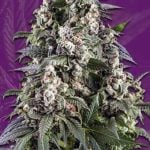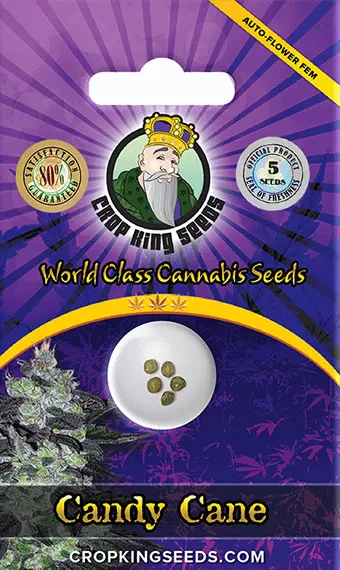Table of Contents
ToggleCultivating cannabis can be an immensely rewarding experience, whether you’re growing for personal use or for the market. However, it’s essential to be able to identify male cannabis plants early in their growth cycle to ensure a successful and seedless harvest. In this article, we’ll take a closer look at the various signs that can help you distinguish female early signs of male plant from their female counterparts during both the vegetative and flowering stages. Armed with this knowledge, you’ll be better equipped to maximize the yield and potency of your cannabis crop.
Recognizing Male Plants in the Vegetative Stage
Identifying male cannabis plants in the vegetative stage can be a bit tricky, but there are several key characteristics to observe:
1. Leaf Characteristics
The leaves of male cannabis plants tend to exhibit distinct differences from those of females. Male leaves are often more symmetrical and have fewer serrations compared to the jagged, serrated leaves of females. However, it’s important to note that these differences may not be readily apparent until the plant is a few weeks old.
2. Growth Patterns
Veg early signs of male plant often display a different growth pattern than females during the vegetative stage. They tend to grow taller and faster, which can result in a lanky appearance with stretched internodal spacing. This rapid growth is driven by their focus on producing pollen rather than developing buds, as is the case with female plants.
3. Pre-flower Clusters
As your cannabis plants progress through the vegetative stage, pay close attention to the nodes where branches meet the main stem. Early signs of male plant in veg may develop small, ball-like clusters known as pre-flowers. These pre-flowers are a definitive sign of their gender. They usually appear before female pre-flowers and can be an early indicator that a plant is male.
Identifying Male Plants in the Early Stages of Flowering
As your cannabis plants transition into the flowering stage, it becomes easier to spot the males:
1. Early Flowering
Male cannabis plants tend to initiate the flowering phase earlier than females. This early flowering is driven by their genetic predisposition to produce pollen as soon as possible. Look for the appearance of small, pollen-filled sacs on the nodes where branches meet the main stem. These sacs are a clear sign that a plant is male.
2. Pollen Sac Formation
The most unmistakable sign of a male cannabis plant is the development of pollen sacs. These sacs, often referred to as “balls” or “sacks,” contain the pollen necessary for fertilization. They usually form on the nodes and can vary in size and shape. Over time, these sacs will mature and eventually burst open, releasing pollen into the air. This pollen can wreak havoc in your grow space if not promptly removed.
3. Lack of Pistils
One of the easiest ways to identify a male cannabis plant during the flowering stage is by looking for the absence of pistils, which are the hair-like structures found on female plants. Female pistils are designed to catch pollen, and without them, there’s no way for the plant to produce seeds. Therefore, if you notice that a plant lacks pistils, it’s a strong indication that it’s a male.
Dealing with Male Cannabis Plants
Now that you can identify male cannabis plants, it’s crucial to know how to manage them to maintain the quality and potency of your crop:
1. Isolation
The moment you suspect a plant is male, it’s essential to isolate it from your female plants. This isolation prevents accidental pollination, which can lead to seed development in your female plants. Place the male plant in a separate area, such as another room or tent, to ensure no cross-pollination occurs.
2. Regular Inspections
To effectively manage male plants, perform routine checks throughout the vegetative and early flowering stages. This vigilance is key to catching male plants early in their development. Regular inspections will help you identify any pre-flowers or pollen sacs as soon as they appear, allowing for swift removal.
3. Removal
Once you positively identify a male cannabis plant, it’s best to remove it promptly to prevent pollination. Simply plucking or cutting the plant at the base is usually sufficient. Be sure to dispose of the male plant away from your grow area to prevent any accidental contamination.
Conclusion
In conclusion, being able to identify the early signs of male weed plants is crucial for successful cultivation. By closely observing leaf characteristics, growth patterns, and the development of pollen sacs, you can ensure that your crop remains seedless and potent. Regular inspections and quick removal of male plants are essential practices for any cannabis grower. With these skills and strategies in your arsenal, you’ll be well on your way to cultivating top-quality cannabis buds that meet the highest standards of quality and potency.
FAQs
1. Can male cannabis plants be used for anything?
Male cannabis plants are typically not used for consumption or medicinal purposes. They are primarily utilized for breeding to create new strains with specific genetic traits.
2. How soon can I identify male cannabis plants?
Male plants often start showing signs in the vegetative stage, but they become more apparent as they enter the flowering phase. Vigilant monitoring is essential to catch them early.
3. What happens if I don’t remove male plants?
Failure to remove male plants can result in pollination of your female plants, leading to seed production. This reduces the quality and potency of your harvest.
4. Can environmental factors influence a plant’s gender?
A cannabis plant’s gender is primarily determined by its genetics and cannot be altered by environmental factors. It’s a genetic predisposition that remains consistent.
5. Are there any exceptions to the signs mentioned in the article?
While the signs discussed in this article are generally reliable, it’s important to note that there can be variations among cannabis strains. Some strains may exhibit atypical characteristics, so always rely on multiple indicators for a conclusive determination.


















